With a plot of land and a bit of help, raising sheep can be fun and rewarding. Raising sheep provides you with wool and delicious meat, milk, and cheese for your hard work.
Sheep eat brush, grasses, and weeds other animals won’t touch. They are inexpensive, reproduce quickly, and with minimal cost, you will have a productive flock in no time.
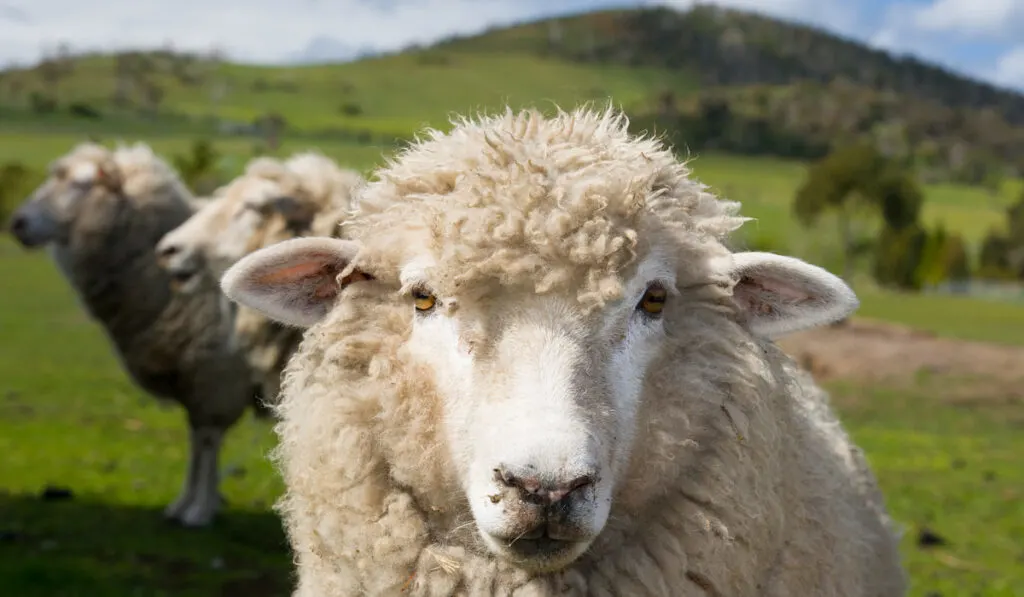
In addition, sheep are easy to handle, compared with cows, pigs, and horses. An acre supports a small flock of four ewes and their lambs.
Here are some tips if you are considering raising sheep on your farm or homestead. This guide explains everything you need to know on how to start sheep farming as a beginner.
Table of Contents
Breeds of Sheep
There are over 200 breeds of sheep to choose from; here, we listed a few wool and meat breeds.
Dual-Purpose (Meat and Wool) Sheep:
- Dorset (medium size, with dense white wool)
- Corriedale (large species, with great meat and lustrous wool)
- Tunis (medium-sized with creamy wool)
- Polypay (lambs are produced frequently and grow quickly)
- Romney (has long, lustrous fleece)
- Columbia (large breed with dense off-white wool)
- Meat-Only Sheep:
- Suffolk (popular for meat)
- Katahdin (very low maintenance)
- Hampshire (one of the largest breeds)
- Dairy Sheep:
- East Friesian (good milk producer)
- Lacaune (excellent breed for cheese)
- Awassi (gentle breed with shaggy wool)
Choosing Your Sheep
After deciding which breed you are going to raise, it is important to select individual animals carefully. Make sure to buy your sheep directly from the farmer who raised them.
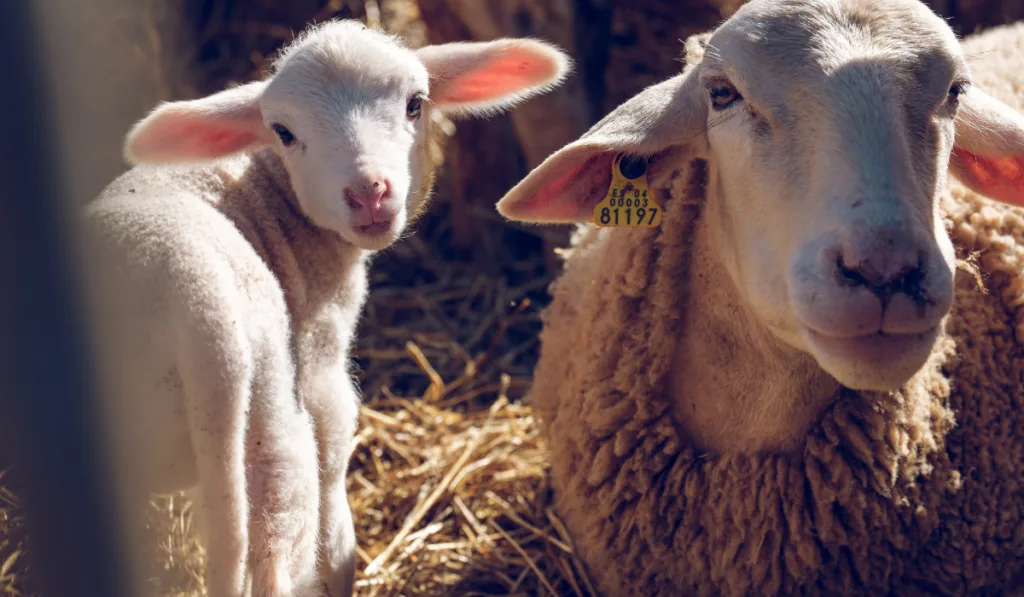
Pay special attention to the flock the sheep comes from. Ask the farmer about the animals’ history and their parents.
Make sure you check the sheep’s physical condition, particularly the following details:
- The eyes should be bright and clear.
- Check the teeth; they should not be worn or missing. The sheep’s lower jaw should not be overshot or undershot.
- Check the sheep’s neck and head for swelling or lumps, which could mean an abscess or an untreated worm infestation.
- The hooves should be trimmed, and the sheep should not be limping. If other sheep in the flock are limping, it means there may be foot rot present in the flock.
- Check for a wide back, deep body, and it should not be too thin or too fat.
- When a sheep has a potbelly, it indicates a worm infestation.
- When you buy an adult ewe, make sure her udder is healthy and not lumpy. A lumpy udder indicates mastitis that will damage future milk production for lambs.
- It is a good idea to have your veterinarian inspect the sheep you want to buy.
Feeding
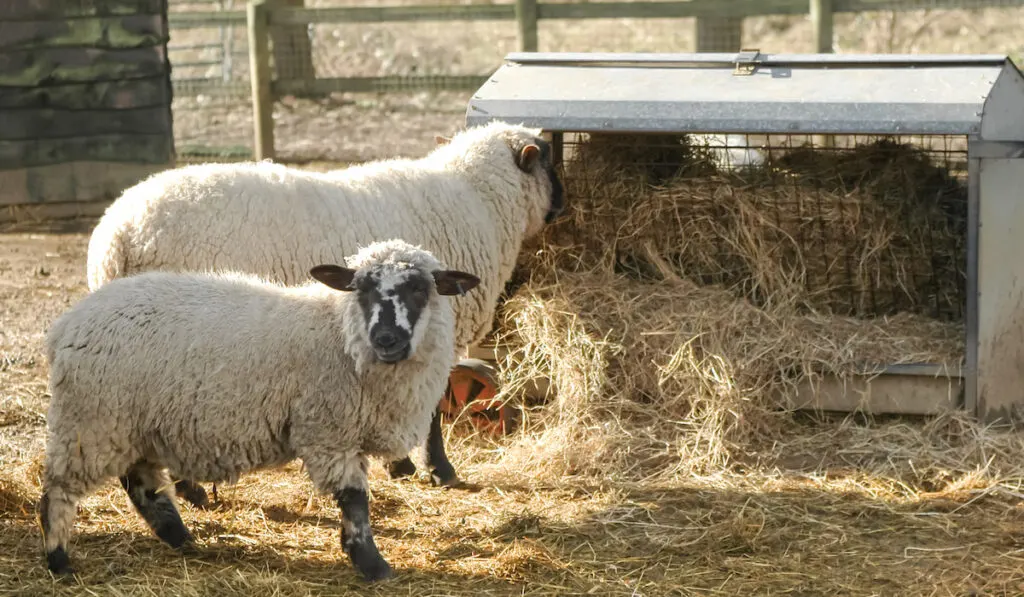
Sheep are ruminant animals; they eat plants like fresh grass and hay predominantly. Sheep can thrive if fed good pasture grasses, salt, a vitamin and mineral supplement, and fresh water.
A good pasture for sheep can include a mixture of grasses, trees, and brush. One acre of quality pasture will support four sheep easily.
During the summertime, when the pasture grass is continuously growing, sheep can go without supplements, but when winter arrives or if there is a drought, you need to supplement their diet with grain and hay.
Rather than putting the hay on the ground, use a raised feeder to keep the feed from getting contaminated. Ewes who will lamb, or sheep raised for market, will do well with a grain supplement.
Sheep need more protein in their diet than other grazing animals, so where pasture grasses are poor, provide grain supplements.
Use only vitamin and mineral supplements formulated specifically for sheep. Salt should be offered in granulated or loose form because, like other ruminants, sheep need salt to prevent bloating.
Feeding Equipment
If your sheep are being fed supplemental feed during winter or drought, using a feeder is essential. Feeding your sheep on the ground results in feed wastage and spreads diseases, like internal parasites.
When sheep can stand in their feed or feeders, they can defecate or urinate in the feed. Raise your feeder off the ground to keep sheep and lambs out.
Feeders also help minimize feed wastage. The only thing worse than buying expensive hay or grain is watching your animals waste it.
Watering
Sheep and lambs need clean, fresh water daily—sheep drink between ½ to 5 gallons of water per day.
Water can be provided in troughs, buckets, tubs, stock tanks, automatic waterers, or tubs. Water sources should always be kept clean and free from straw, hay, or fecal matter.
Use smaller troughs that are easier to clean and drain. Sheep will drink more water during winter if the water is ice-free and during hot weather, if the water source is in the cool shade.
Sheep prefer to drink still water rather than water from a moving stream. In general, it is recommended that streams be fenced off, so livestock cannot drink from natural water sources.
Fencing and Shelter
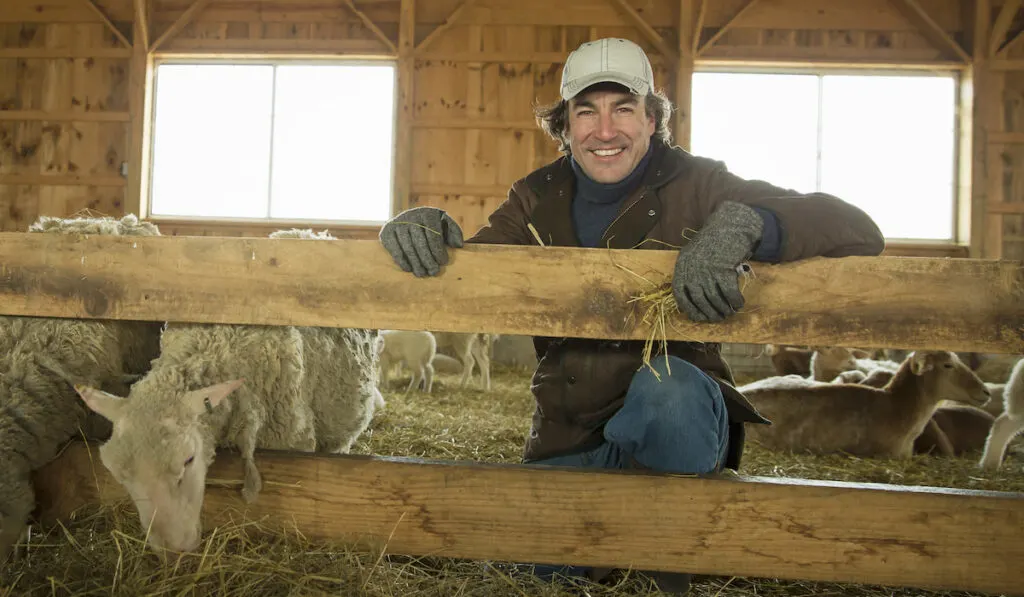
The best kind of fence for sheep is smooth-wire electric or woven wire non-electric fencing.
In warm summer months, sheep need shade from trees or an open-roof structure.
A simple three-sided south-facing shed will protect your sheep from rain, snow, cold, and wind. If you use a light, portable shed, you can move it to other paddocks.
Sheep will choose shelter if it is available to them. Protecting your sheep from heat is probably more important than protection from the rain. Sheep with hair are more likely to seek shelter from rain than woolly sheep.
Trees or a windbreak is the most basic shelter that sheep need. A simple run-in shed or shade structure will do fine in open pastures without any tree coverage.
When your sheep give birth to lambs during the winter, a small barn or enclosed shed is necessary to protect the lambs.
Gestation
The gestation period for sheep is around 142 to 152 days. Individual pregnancies may vary from 138 to 159 days. There might be breed differences in gestation periods.
Handling Sheep

Even with small flocks of sheep, there will be times when they need to be handled, like when they need shearing or medical treatment. To confine individual sheep, use a simple chute or forcing pen.
Sheep are easy to handle if you know the basics of how they behave and move:
- Sheep always move toward other sheep and follow other sheep in the flock.
- Sheep like to move uphill and toward open areas, away from buildings or confinement.
- Sheep can be herded better around corners or curves where they cannot see what is ahead.
- The best way to train sheep is to offer food. Sheep love grain and apples. Let them follow you with their favorite treats.
- Try to get your sheep to come to you voluntarily.
- Sheep naturally flock, which means once you get one sheep to come to you, the other sheep will probably follow.
Parasites
Sheep are susceptible to parasites, particularly when too many sheep are confined together. To prevent this, rotate pastures every two to three weeks.
If your sheep gets infected, you should control the parasites with deworming treatments. Talk to your veterinarian about which product is the best to use for your flock.
Guard Against Problems
Some animals are predators of sheep, like coyotes, wolves, and dogs. Foxes and eagles and other birds of prey will try to get to the lambs.
Here are some tips for dealing with predators:
- Keep some guardian animals in your pasture, like trained dogs, llamas, or donkeys, to protect your sheep.
- Use high, tight fencing and lighted pens and corrals at night.
- Keep your sheep in an open pasture within your field of sight. That way, you can respond when predators show up.
- Use live traps or cages for trapping feral dogs. Harmless animals can be released again if you use live traps.
- Put bells on your sheep.
Newborn Lamb Care
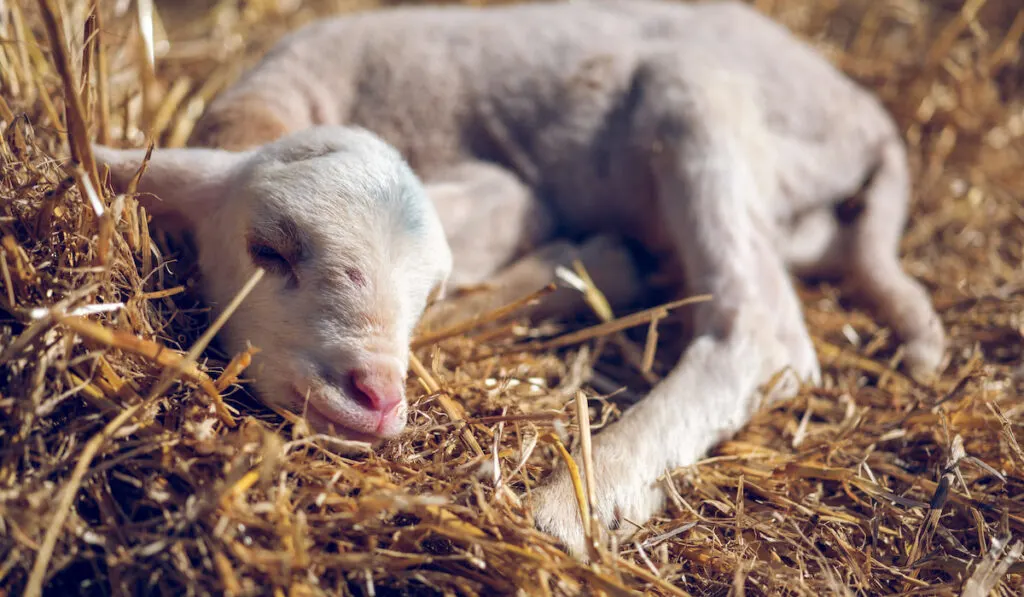
Around twenty percent of lambs die before they are weaned. As high as eighty percent of the losses happen in the first ten days. Taking good care of the lambs could increase the number of lambs raised.
As soon as the ewe is delivered, you should move her and the lamb to a separate pen. Lambing pens help the lamb’s bond with the ewes and prevent mismothering. After delivery, you should check the ewe’s udder to see if she has a good milk supply and check for mastitis.
Check the lambs regularly to make sure they are drinking. Lambs that are drinking well will have a full stomach.
Lambs that have not been drinking should be bottle-fed or helped to the ewe’s udder and encouraged to latch on to a teat to drink. Weak, small, and mismothered lambs will often need help.
The lambing pen should be at least 5 x 5 feet in size. Sheep that are bigger and have multiple births need larger-sized pens. Lambing pens should always be kept dry and clean with enough bedding.
Water buckets and feed troughs must be hung out of reach of lambs. Take extreme caution when using heat lamps.
Heat lamps should not be used excessively. Hang the heat lamp in one corner of the pen at least 3 feet above the ground. Lamb jackets or coats are alternatives to heat lamps.
The navel of a newborn lamb can quickly become infected if it is not cleaned and disinfected after it is born. When a lamb’s navel cord is more than 2 inches long, you can clip it closer to the body.
Spray or dip the naval area with an antiseptic solution like Betadine® or Chlorhexidine (Nolvasan®).
The First Milk / Colostrum
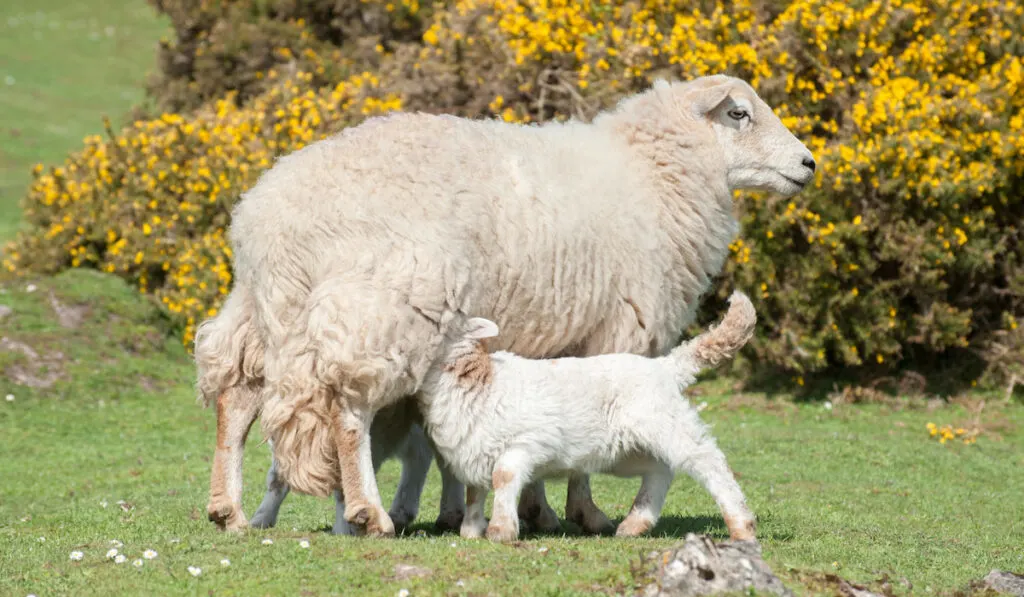
Lambs need to get colostrum in the first 24 hours of life. Antibodies only get absorbed into the lamb’s bloodstream during the first 18 to 24 hours of its life.
Lambs should drink 10 percent of their body weight in colostrum by 24 hours after birth. Death and disease are more likely in lambs that do not get colostrum.
Complications
Deaths in newborn lambs are mainly caused by hypothermia, scours, starvation, and pneumonia. Lambs with difficult births are more affected with health problems and lambs who did not get adequate colostrum.
Starvation
Another main cause of death in newborn lambs is starvation. There are several reasons for starvation:
- rejection by the dam
- inadequate colostrum intake
- mastitis
- inadequate milk production
- teats that are too big or drooped too close to the ground
- sore mouth
- difficult birth
- joint injury
- sickness
A starving lamb will be hanging his head, and ears drooped back; it may even be too weak to stand. When you feel the lamb’s stomach, it will feel empty.
Shaking, shivering, and hypothermia are all signs of a starving lamb. The best starvation treatment is nutrition. Feed lambs with a bottle, while some may require tubing.
After colostrum feeding, starving lambs should be fed a high-quality milk replacer specially formulated for lambs.
The lamb milk replacer powder should be reconstituted according to the manufacturer’s instructions on the container. Do not dilute it more than recommended.
Mix it with warm water because of the high-fat content of lamb milk replacer. Cool the milk to 35 to 40° F before feeding it to the lamb.
Important to mix it correctly as lumps can contribute to bloat. Add a little yogurt to the milk; it helps prevent bloat.
In the first few days, lambs should be fed often. When the lambs are a few days old, the frequency of feedings can be reduced.
Increase the amount of milk per feeding when the lamb gets older but reduce the feedings to two.
Lambs need to drink 10 to 20 percent of their body weight per day.
More frequent feedings will help to prevent overeating and bloat. When hand feeding lambs, it is important to have a consistent feeding schedule.
Feed individual lambs with bottles fitted with rubber teats. Hygiene is crucial; feeding equipment should be cleaned after each feeding. Unused milk should be discarded or refrigerated immediately.
Conclusion
Raising sheep is rewarding. Success in raising sheep requires good planning in advance and solid, continual management of the sheep.
Sheep can be kept for several reasons, earning a living from wool, milk, or meat. Sheep are easy to manage and low maintenance when it comes to feeding. If you have a little extra pastureland that is not enough for cows, sheep certainly deserve consideration.
